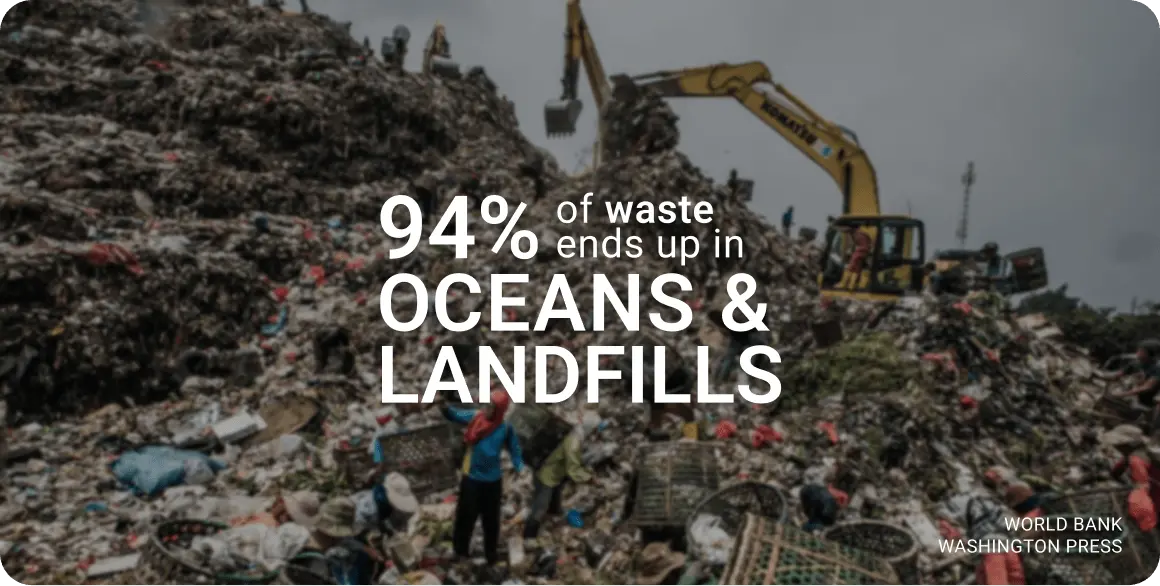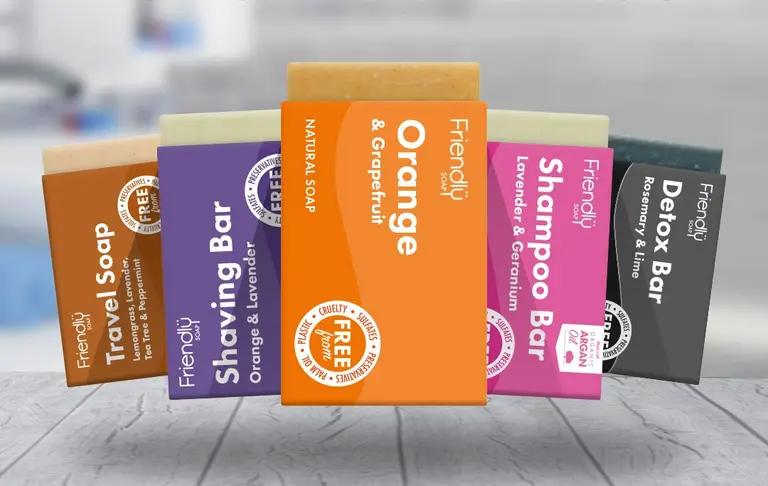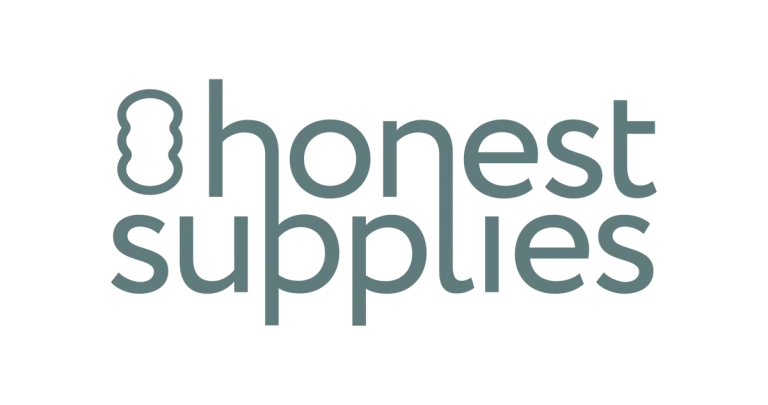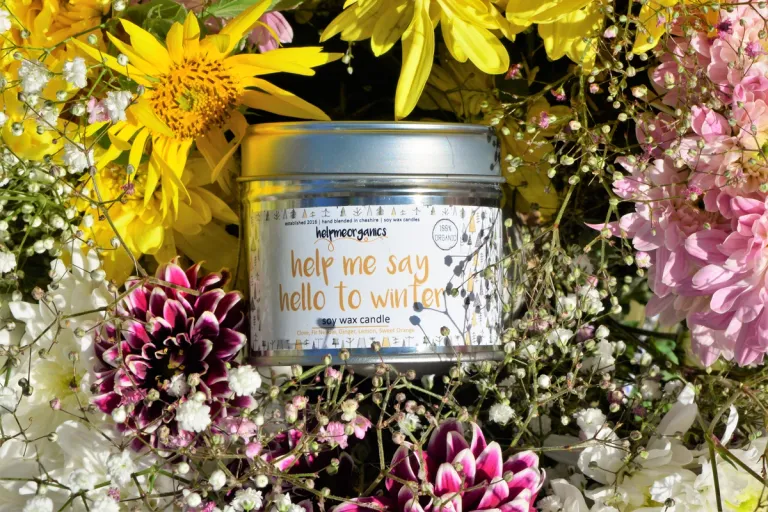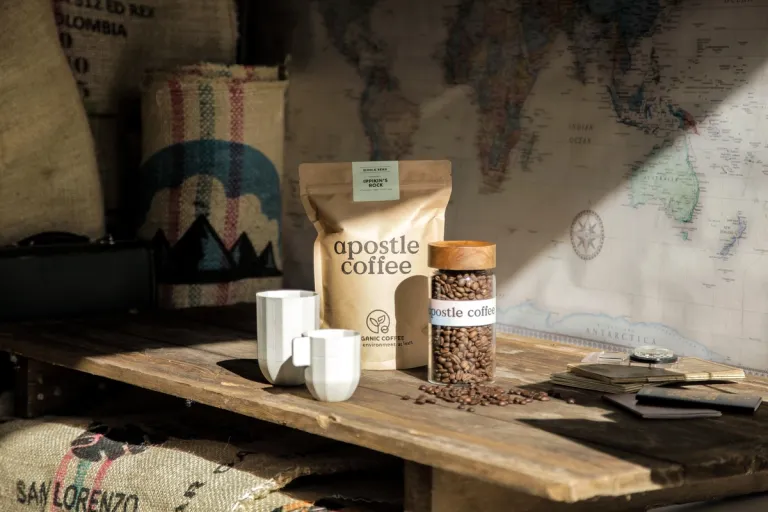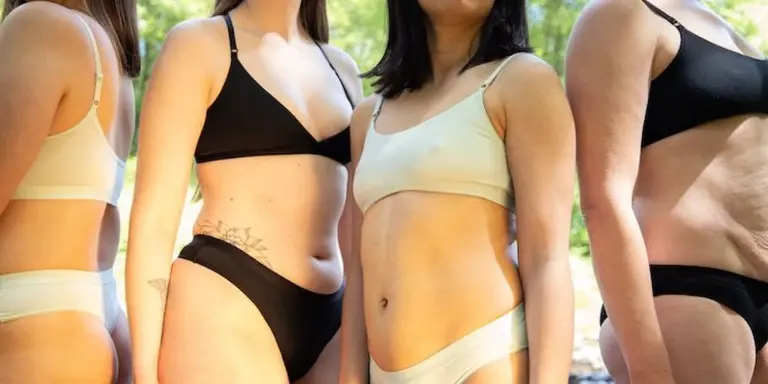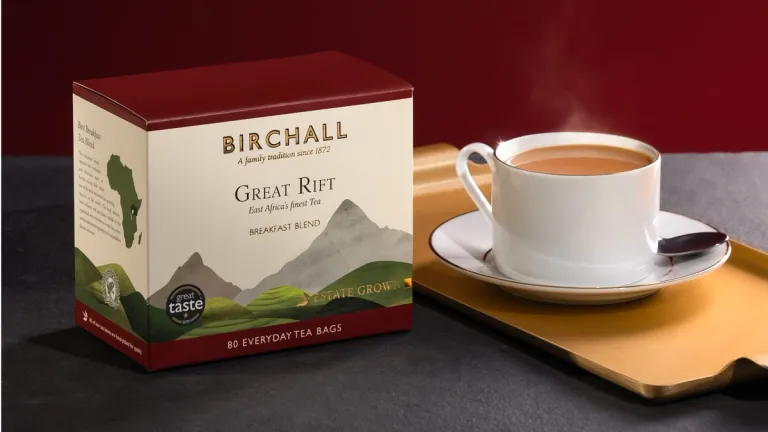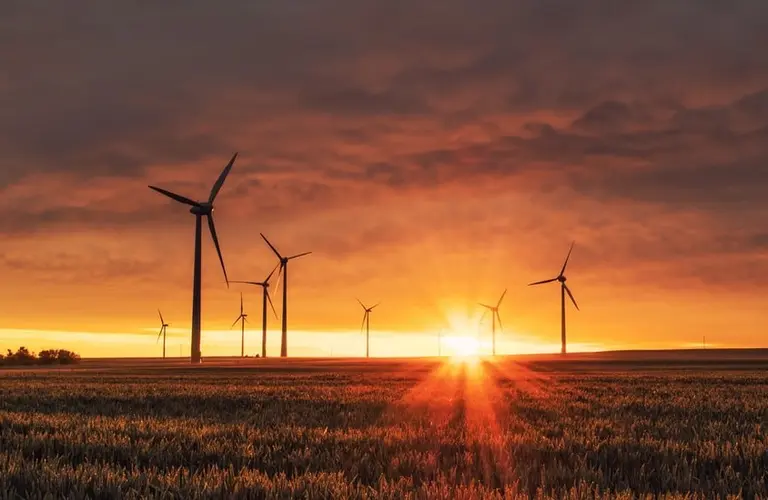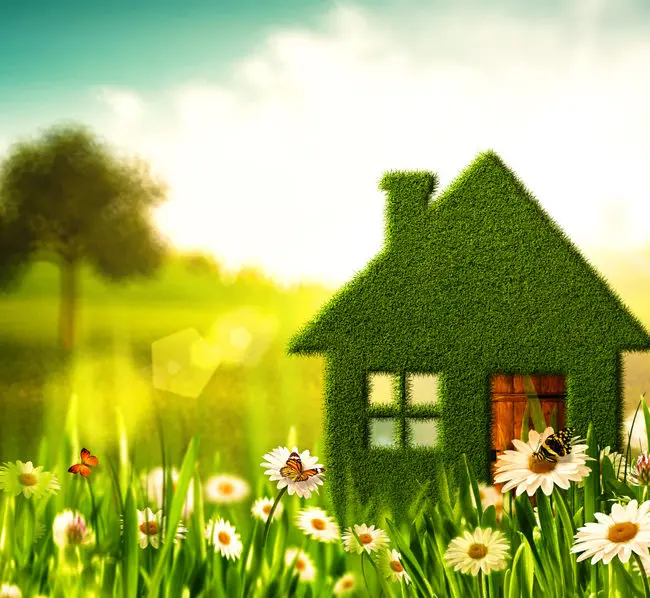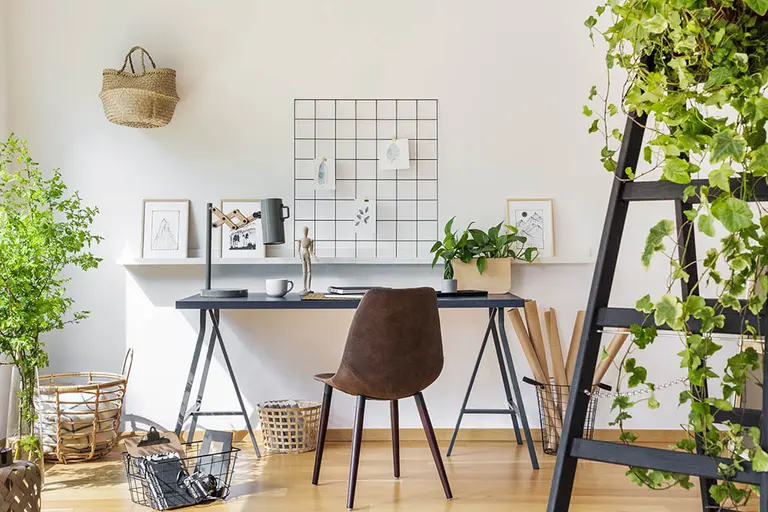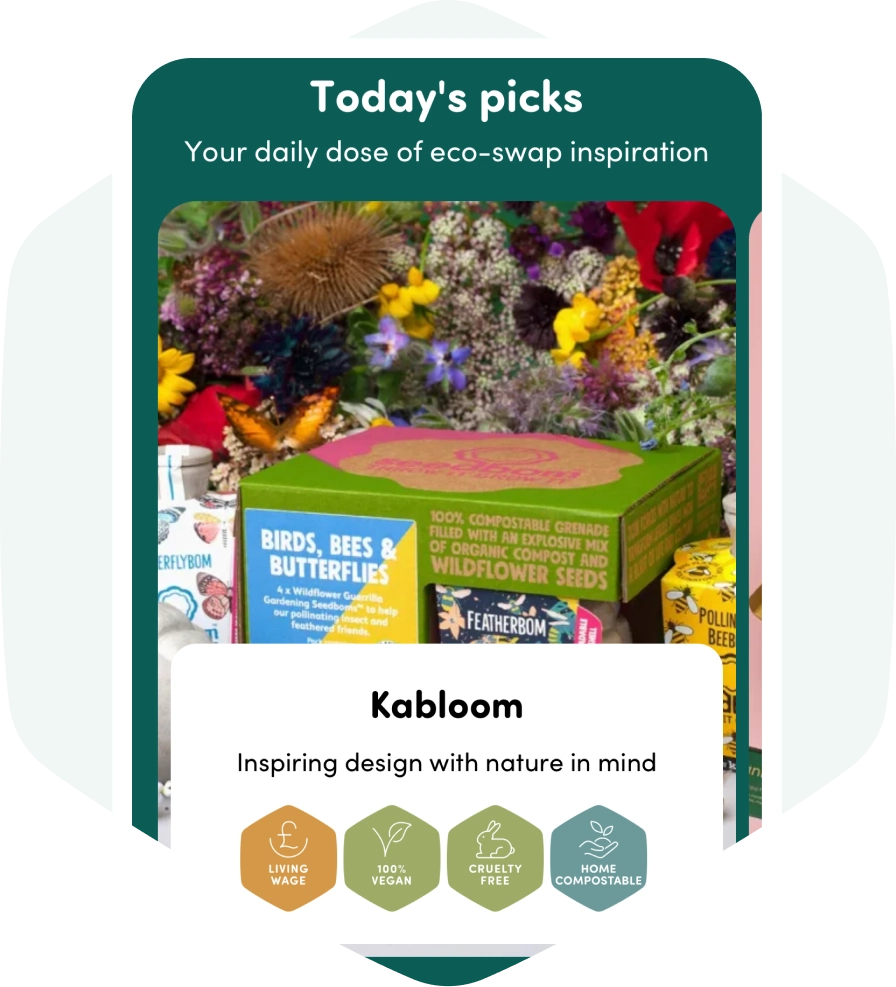With harsh chemicals polluting our air and waters, excessive packaging usage, and high levels of waste, the packaging industry has long been notorious for its environmental negligence.
The good news is that the packaging industry is now finally responding to the increased consumer demand and making packaging that extends product shelf life and creating innovative materials that are kinder to the earth.
We’re not out of the woods yet though, and all have a part to play in getting it right.
The recycling problem
- Globally more than 2 billion tonnes of household waste is generated each year (The World bank)
- Up to 93% of waste ends up in oceans & landfills (Landfillsolutions)
- Consumers are confused about recycling. Over four in five UK households (85%) put items in the kerbside recycling that is not accepted in the recycling collection, leading to high rates of costly contamination. (Wrap 2021)
In summary, we create a huge amount of waste but don’t usually reuse it (by repairing, recycling, upcycling or composting). That’s called a linear economy, where we take - make - and throw away, ending up with waste and pollution.
Nature on the other hand reuses everything. It’s an intelligent circular model, guided by seasons and the circle of life. We can learn a lot from this!
The best place to start is by getting clear on how to make sure our waste gets recycled. We spoke to recycling experts Scrapp, an app that helps people recycle correctly, to clarify this topic and provide recycling tips.
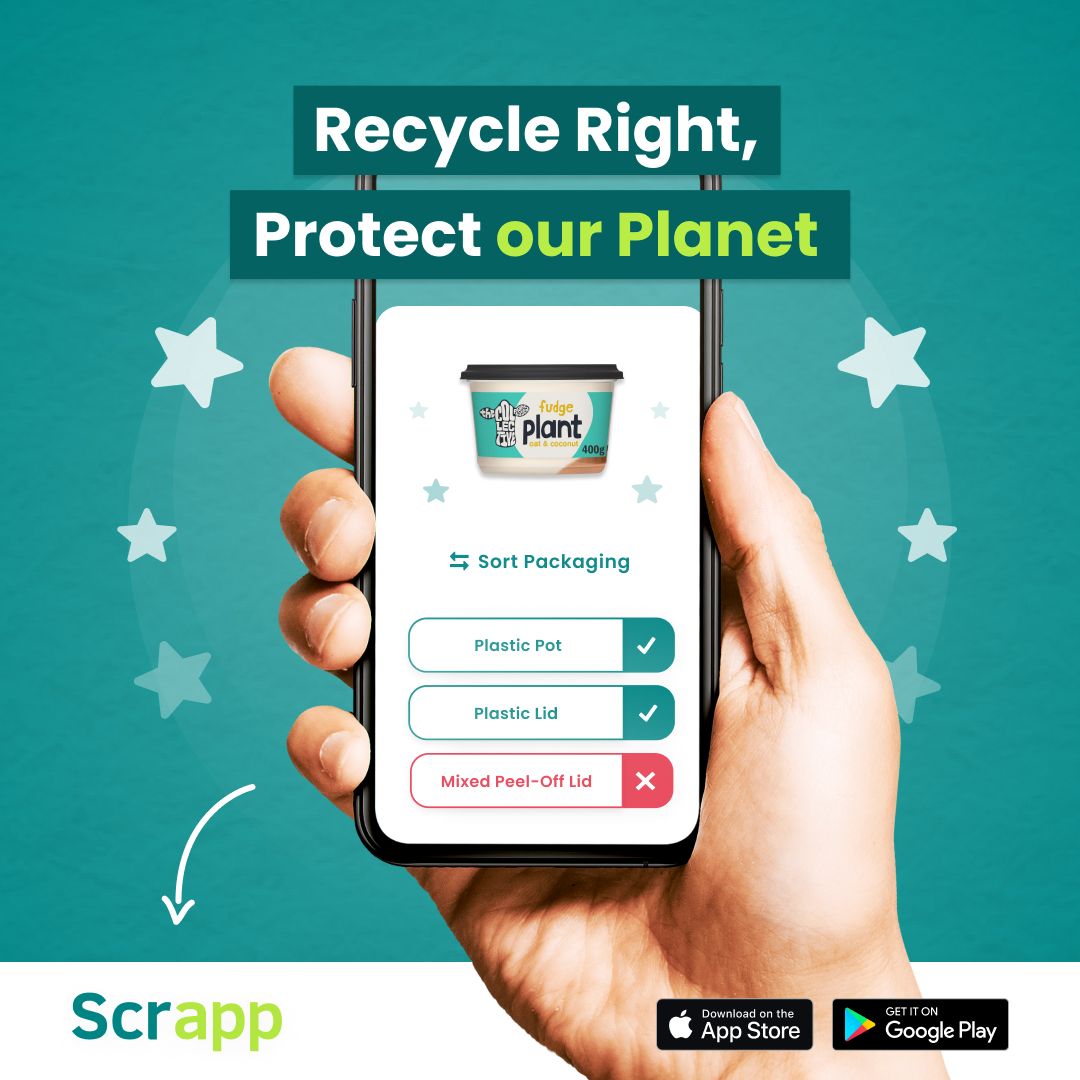
Recyclable vs. Recycled
Two important definitions to know when discussing sustainable packaging are recyclable and recycled.
Recycled is short for recycled content, which means that the packaging is made from either over 50% of recycled materials or over 95% of recycled materials (i.e., materials that have already been used once before and have been remade into new packaging).
Recyclable, as a definition, means that an item has the ability to be recycled in your curbside or drop-off recycling programs. Every program is unique, so check what your local recycling program accepts. Feel free to use the Scrapp mobile app, which will review all that information for you with a quick barcode scan.
Also, if you want to learn more, check out our recyclable and recyclability standards here.
What materials are more sustainable?
Honest answer - it’s complicated.
Unfortunately, there's no perfect material for every type of packaging and product. Sustainability in packaging needs to be looked at on a case-by-case basis.
In addition, ingredients can react with certain packaging components, sometimes making the material non-recyclable. For example, did you know that a cardboard pizza box, that’s typically fully recyclable, cannot be recycled anymore if the oil from the pizza gets absorbed into the cardboard. The best thing then is to cut or tear the cardboard so non-oily bits go into the recycling bin only. Otherwise your whole carefully collected lot can be contaminated and may be discarded at the recycling facility.
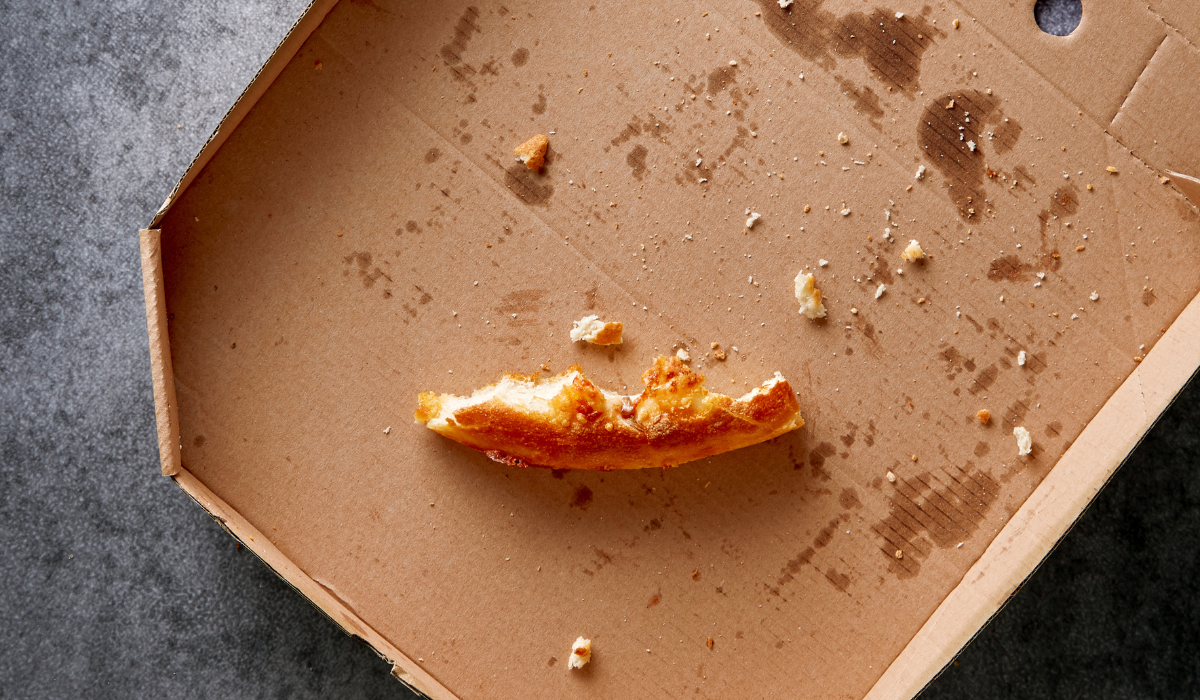
See the figure below highlighting the main advantages and disadvantages of materials’ sustainability considerations at a high level.
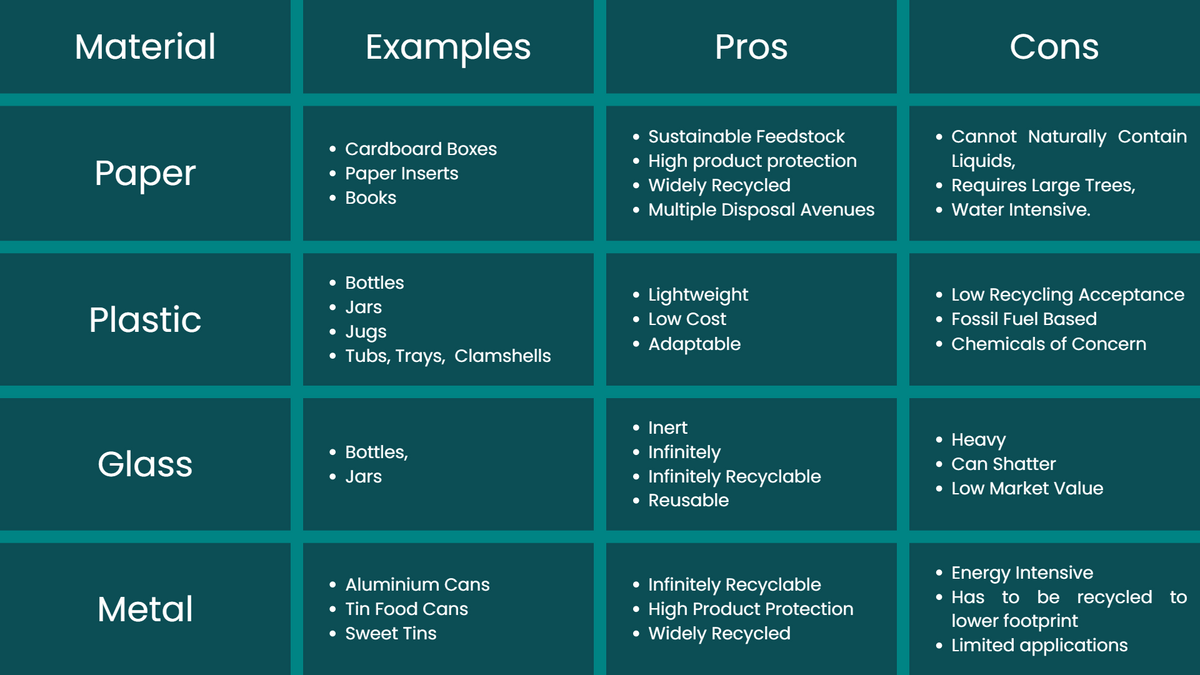
What can I do as a consumer?
First place to start is to look at what your local kerbside recycling and compost bins allow to ensure you’re clear on what goes to which bin. That’s essential to increase the amount of waste that gets reused. Recycle Now has a handy tool to find this out.
Also, make sure not to use your toilet as a bin. Our wastewater infrastructure is not designed to deal with these items, and so we end up with massive sewer blockages and pollution in local waterways. Tips on what to do instead here.
Secondly, know how to identify materials correctly and buy from brands who have taken care of their packaging to provide recyclable options.

What should I buy and avoid?
The best materials are usually the ones that can be reused by recycling, composting or upcycling. This means that pollution and waste doesn’t get created that could end up in nature and virgin materials do not get extracted from the ground or manufactured, causing less emissions to be released.
The other consideration is the risk of any harmful, toxic or irritating substances that the materials may carry. Plastic for example is shown to leak into food and drink containers, so glass would be a better and healthier alternative.
Where to get the correct recycling information?
Look for verified information, labels and certifications or use the recycling app Scrapp.
All ethy verified brands have undergone a rigorous process to ensure they comply with the best sustainable practices possible. Be on the lookout for any of the brands shown below that have committed to sustainable packaging and have been certified by meeting our sustainability standards:
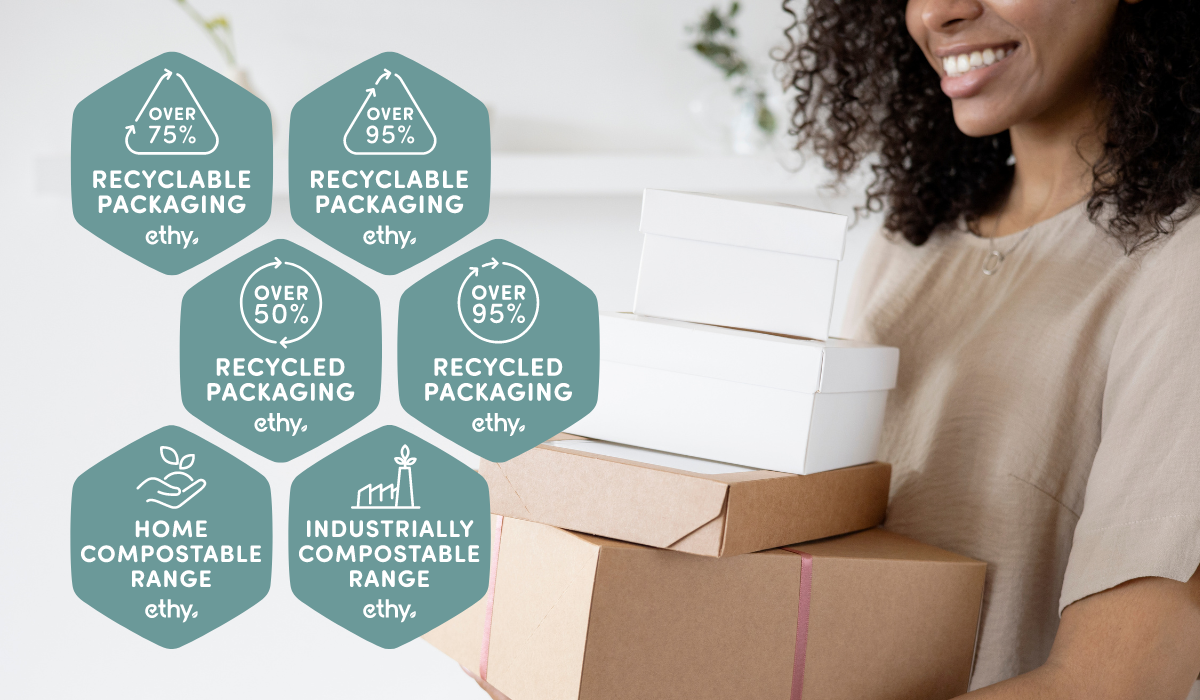
If any of our friends don’t have our recyclability certifications, then they are working on it. Packaging is a science, and there are even university degrees specific to packaging engineering. So next time you pick up your favourite products off the shelf or unbox them in your home, we hope you feel empowered to make better choices and appreciate the work it takes to deliver your favourite products to you safely.
Explore the ethy verified brands below:
You may also like...
Sign up for our newsletter
Get the latest sustainability news delivered directly to your inbox.
